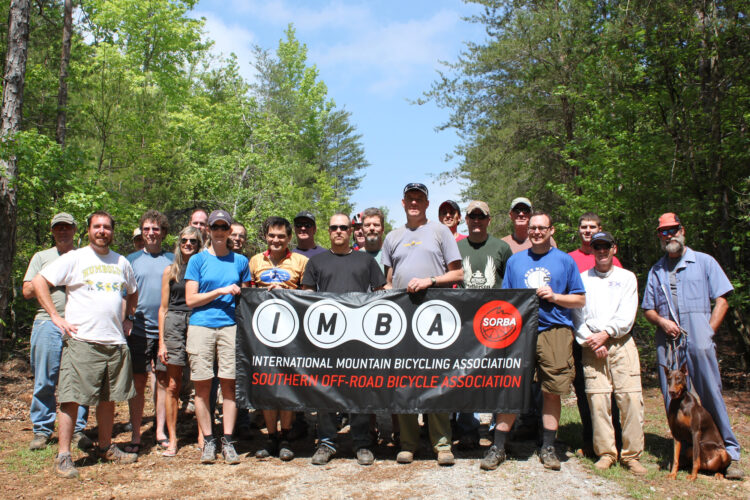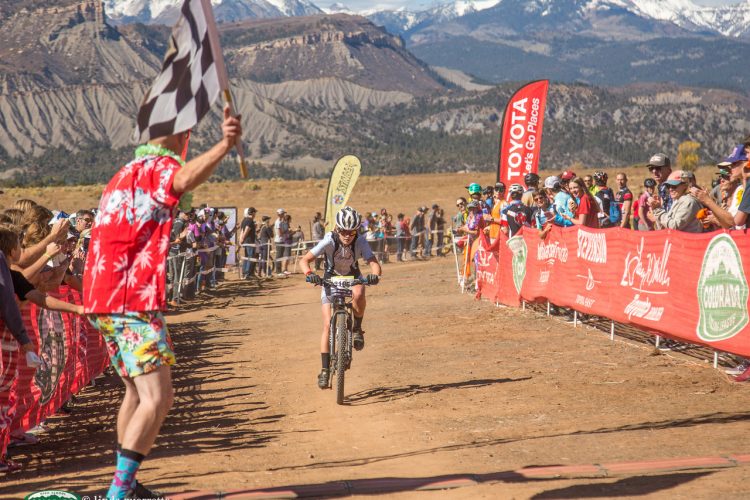
Mountain biking and Miami are rarely, if ever, mentioned in the same sentence. Miami is known for its exotic beaches and diverse culture, not its trails. However, a group of incredibly dedicated riders has worked hard to transform a small piece of land owned by the city into an exotic riding destination for mountain bikers.
To find out more about Virginia Key’s trails, Singletracks spoke to Jerri Halgowich, the current president of the Virginia Key Bicycle Club (VKBC), Bernard Reviere (aka Frenchy), who designed Virginia Key’s trails, Mary Jane Mark, the owner of Mack Cycle & Fitness, and John Voss, the current treasurer of the VKBC.

Like Florida itself, Virginia Key has an interesting history
Virginia Key is a small barrier island located just east of downtown Miami. The island is approximately 5 miles long and a little over 1 mile wide. It is composed of a coral and limestone foundation covered by sugar sand and native vegetation.
Also known as Bear’s Cut or Cayo Ratones, it was created by hurricanes in the 1830s, which severed it completely from Key Biscayne. There was once an indigenous settlement on it, which Frederick H. Gerdes of the U.S. Coast Survey mentioned when he surveyed the island in 1849. Gerdes was also the one who named the island Virginia Key.
Virginia Key made history in 1945 when Dade County made a portion of it a “colored-only” park after the local NAACP chapter staged a “wade-in” at a nearby “whites-only beach.” The county later transferred the park to the City of Miami in 1982 and the city closed it shortly thereafter.
Besides the park, which the city reopened to the public in 2008, the Miami Seaquarium, the Atlantic Oceanographic and Meteorological Laboratory, the Rosenstiel School of Marine and Atmospheric Science, the Maritime and Science Technology Academy, and a wastewater treatment plant all share space on the island.

Several factors led to the creation of Virginia Key’s trails
Before Virginia Key’s trails came into existence, riders had only one option for mountain biking in Dade County: Oleta River State Park at the north end of the county. This left riders in the area hungry for new options.
Then, in the mid-2000s, the City of Miami held open forums to come up with a master plan for Virginia Key. According to John Voss, riders showed up at these forums advocating for mountain bike trails on the island. Voss said the city wasn’t enthusiastic about the idea at first, but then a few things happened that changed their mind.
First, the economic crisis in 2008 took place. The millions of dollars the city had set aside for potentially developing the island evaporated. Second, in June of 2008, Bicycling Magazine named Miami the third worst city in the nation for cyclists. The bad publicity pushed the city to find ways to become more rider friendly. Third, the city had a growing problem with homeless people on vacant land at the north end of the island and could not afford to have a consistent presence there.
These things, along with Mary Jane Mark’s commitment to donate $10,000 to help fund the creation of trails on the island, persuaded the city to give riders the greenlight to build mountain bike trails on the island. Once that happened, Frenchy, Voss, and Mark formed a 501c3 corporation known as the Virginia Key Bicycle Club to help fund the trails too. Frenchy said the club’s first meeting was held in a bar in Coconut Grove. 25 people showed up and gave $20 a piece in membership dues, providing an additional $400 that was put toward building the trails.

One man’s vision turned vacant land into a mountain biker’s paradise
With the initial funding for trails secured, VKBC turned to Frenchy to design and build the new trails. Frenchy came to South Florida from France in 1980, where he rode hybrid bikes on dirt trails in the woods long before he knew it was called mountain biking. When the sport arrived in South Florida during the 1990s, Frenchy dove in head-first.
His first trail building experience came at Oleta River State Park where a friendship with the park manager led to him designing and building trails there. Frenchy doesn’t have any formal training in trail design. He’s a wine expert and professional musician by trade. For him, trail building is just instinctual.
“I just see the trail,” he said. “I’m very good at geometry and physics. I learned trail building while I built the trails.”
Frenchy’s canvas was a 50-acre parcel on the northside of the island that had been used as a place to dump dirt from various construction projects in the city. Unlike most of Miami, the ground there was uneven as a result and even had as much as 50 feet of elevation in some places. The location was spectacular. It was right next to the ocean and offered amazing views of Miami’s skyline.
He, along with a core group of volunteers, initially built 4 miles of trails that were first opened to the public in February of 2011. By his estimates, he has put in over 8,000 hours of volunteer work on Virginia Key’s trails over the last 12 and a half years. According to Frenchy, there are currently over 9 miles of trails on the island and another 1 to 2 miles of trails that can be built before they run out of room. The trails are all named after rock songs, like Panama, Stairway to Heaven, and Freebird, paying homage to Frenchy’s musical background.

Volunteers and donations are the lifeblood of Virginia Key’s trails
Halgowich told Singletracks VKBC currently has approximately 100 members. The club’s members are the reason why Virginia Key’s trails exist. All the trails were built by members of the VKBC and are maintained by them as well. Frenchy said that they passed 50,000 hours of volunteer labor this past December. That’s $1 million of value in free labor by Frenchy’s calculations.
Additionally, VKBC annual membership dues and generous donations helped fund the trails. The club averages about $20,000 in dues a year. Frenchy said that Mack Cycle & Fitness has provided approximately $80,000 in donations over the past 12 years and Oppenheim Architecture & Design has given $30,000 in donations for the trails too. Many other community members have chipped in money here and there along the way.
Halgowich stated that the club has workdays every Sunday from 10 a.m. to 2 p.m. 12-20 members usually show up for each workday. The club also created an app riders can use to report trail issues to the club. Mark also mentioned that her shop holds free clinics every Friday morning at the trails. For her, it’s a great way to invest in the community.

Volunteers saved Virginia Key’s trails from extinction when Hurricane Irma severely damaged them in 2017
When Hurricane Irma blew through South Florida in 2017, it produced a 4-foot storm surge and 70 to 100 mph gusts that destroyed nearly all of Virginia Key’s trails. The island itself lost thousands of trees, including most of the Australian Pines in the bike park. When Frenchy went out to survey the damage the day after the storm went through, he couldn’t find the gate to the property because of all the trees that had fallen, blocking it from view.
Frenchy’s fear was that Virginia Key’s trails would meet the same fate as the former mountain bike trails at Quiet Waters Park in Broward County. In October of 2005, Hurricane Wilma blew through the area, wiping out most of the trees at the park. Frenchy said that the county came in with bulldozers afterward to clear out the trees, destroying the trails in the process.

To avoid the same fate at Virginia Key, Frenchy put out a call on social media, asking for volunteers and reminding them about the Quiet Rivers debacle.
“In four consecutive weekends, we had 812 volunteers come out.,” he said. Under Frenchy’s guidance, the trails were re-built and the city let the park stay open.
The riding experience at Virginia Key is unparalleled
Imagine being in a tropical paradise riding several miles of trails compacted into a relatively small plot of land with spectacular views of the ocean and Miami’s skyline. That’s Virginia Key. It has everything from mellow green trails to black diamond trails filled with wooden features that would impress those who ride Whistler on a regular basis. Plus, as Voss noted, you’re never more than 10 minutes away from the parking lot by bike when you’re out on the trails.

And the riding community itself is as diverse as the city that surrounds it. Riders of all ages, cultures, and backgrounds flock to the trails on weekends, to both ride them and help maintain them. Voss’ own children grew up riding the trails and he regularly sees a lot of families riding them together.
Despite recent challenges, VKBC is optimistic about the future
Due to recent concerns about safety, the city has currently prohibited VKBC from building any new trails until a risk assessment has been completed. Despite the setback, Frenchy is optimistic the city will continue to let VKBC operate the trails and add to them.
“I want to build a jump park with five or six lanes,” he said. “It’ll be the best one in the southeast. I would also love to have a permanent bathroom and running water.”

But most of all, the club just wants autonomy from the local government to build and maintain the trails. They are hopeful this will happen and mountain biking will remain on the island for many years to come.
As Voss put it, “the trails at Virginia Key are an amazing gift volunteers gave the city. A safe, amazing place for people to ride. We hope the city appreciates it and takes advantage of it.”





















4 Comments
Jun 21, 2023
There are actually bike rentals on site, but they're pretty entry-level.
Highly recommend if you're in the area, and Markham Park on the NW side of the city is excellent too.
Jun 22, 2023
Jun 22, 2023
Jun 26, 2023